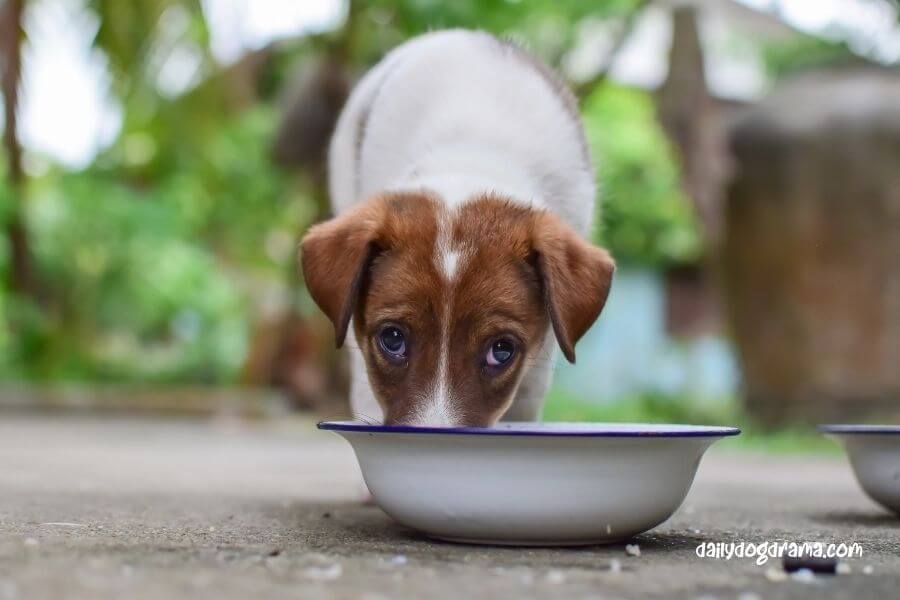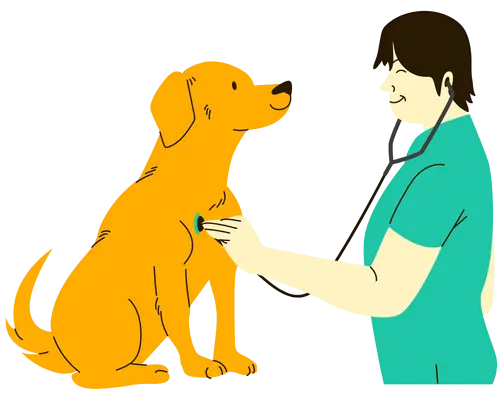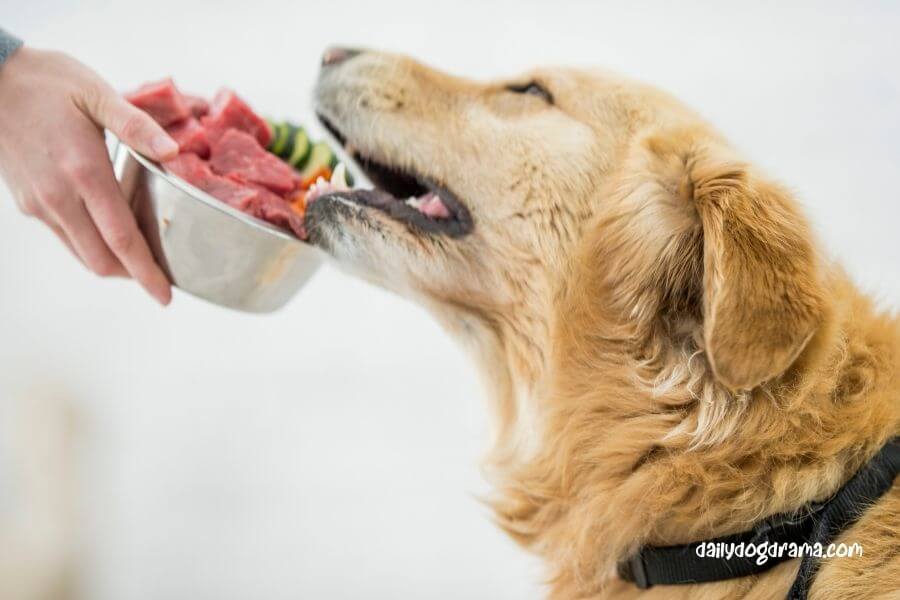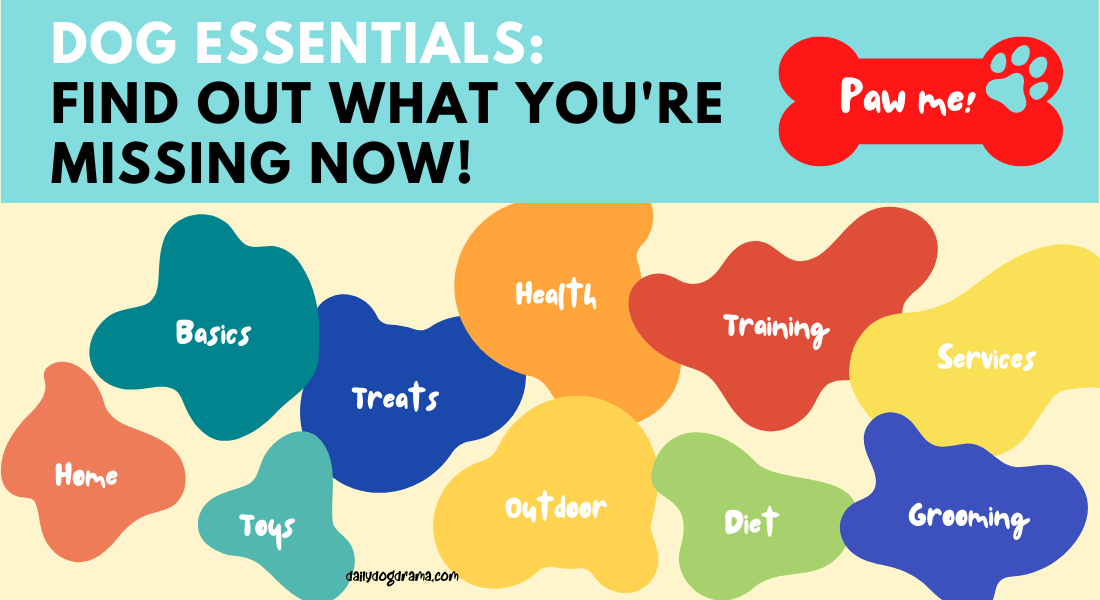Do you know what DOG ESSENTIALS you are missing out? Find out now!
Zack Keithy, our author, is a certified veterinarian technician (UC Blue Ash) for over 6 years (contact him here). The articles written here are based on his expertise and experience, combined with a review by our expert vet reviewers including Dr M. Tarantino. Learn more about us here.
Have you noticed that your dog seems to be hungry more often now that you have changed its diet to a raw one? What is going on here?
Why is my dog always hungry on a raw diet?
As this is a new transition for your dog, it may need some time to get used to it. Previously when you fed it with commercial food, the ingredients included fillers which may make your dog feel more full, but now that these are absent, they may feel “hungry”.
Read on to learn more about feeding your dog with a raw diet and if that’s the right move you should make!
Medical Questions? Talk to a Veterinarian 24/7.
Connect one-on-one with a licensed vet who will answer your questions in minutes.
*Article may contain affiliate links to retailers like Amazon and Chewy. Learn more on our disclosure page.

- Is it Safe to Feed My Dog Raw Food?
- Can All Dog Breeds Have a Raw Food Diet?
- Benefits of a Raw Food Diet
- Risks of a Raw Food Diet For Dogs
- Why is My Dog Always Hungry On a Raw Diet?
- How Much Raw Food Should I Feed My Dog?
- How to Keep My Dog Feeling Full After Meals?
- Should You Mix Raw Food and Kibble?
- Frequently Asked Questions (FAQs)
Is it Safe to Feed My Dog Raw Food?
Raw dog food comes in many forms and while some are homemade from scratch, others are store-bought, freeze-dried, or even dehydrated.
It can include organ meats, muscle meats, raw eggs, raw bones in whole or ground form, fruits, and vegetables.
While some may argue that raw dog food harbors bacteria that can cause sickness in both pets and humans, advocates of raw foods believe that this diet gives your dog healthier skin, shinier coats, increased energy, and an overall improved immune system.
Sanitization is key when it comes to preparing raw food since raw meat can breed bacteria.
There has to be meticulous care when it comes to storing, handling, and even preparing raw food.
It may also not be for every dog as puppies may have weaker digestive systems.
There have also been discussions in the veterinarian world where some vets think feeding your dog raw food is fine as long as proper preparation is done.
On the other hand, other more mainstream vets do not condone feeding your dog a raw diet due to safety reasons.
Doggy says, read this next: Can Dogs Drink MiO? [Learn The Dangers]
Can All Dog Breeds Have a Raw Food Diet?

In essence, all dog breeds can be fed a raw food diet whether they are big dog breeds or toy breeds.
However, there have to be some measurements of risks and benefits as far as your dog is concerned.
While a study by Anna Hielm-Bjorkman showed dogs with a raw food diet have healthier gut functions, there have also been cases where such a diet is not suitable for the dog and may cause health complications leading to death.
Despite that, senior dogs may benefit from a raw food diet as they contain less fat and more water content when compared to kibbles.
This works to benefit their digestive systems as the metabolism rates slow down and they find difficulties in processing their food.
A raw diet consisting of ground or whole bones is also beneficial to the senior dog’s bone health.
If you have a picky eater at home, a raw food diet may also be good for it as an alternative to kibbles or wet food as the choices are different every day.
If your dog has allergies, it would also be worth trying to put it on a raw diet as they have fewer variables unlike in kibbles.
In fact, a raw diet with bones helps your dog eliminate its allergy issues as they are gentle on the gut.
However, if your dog has late-stage kidney disease, severe liver failure, or cancer, a raw diet should not be recommended as its body system is not at the optimum to process raw meals.
Hey there, sorry to interrupt but I wanted to tell you about an online vet service I’ve been using for years.
An in-person visit with one is great, but it’s not always an option.
Now, thanks to technology, you can speak to one without leaving your home.

Got something to ask a vet?
Talk to one anytime, 24/7.
* Don’t use this service for emergencies.
Alternatively, a vet can come out to you instead (exclusive to our readers: use THEVETS15 for 15% off).
SCHEDULE AN APPOINTMENT HEREThank you. The rest of the article continues below.
Doggy says, you might be keen to read this too: Are Goldendoodles picky eaters?
Benefits of a Raw Food Diet
Supporters of this diet find that dogs tend to have healthier skin (fewer allergies), shinier coats, cleaner teeth, higher energy levels, and overall better immune systems.
It is also believed that a dog on a raw food diet may also have lower cancer risks.
In fact, as the diet typically consists of meat, bones, raw eggs, fibers, fruits, and some form of dairy, most think that the vitamins and minerals found in these food choices can be beneficial to the dog’s bone health as well.
Nevertheless, there have never been any studies on a raw food diet that is big enough to show any statistical benefits of putting your dog on this diet.
So the jury is still out on this one.
Doggy says, read this too: Can dogs eat chicken broth with onion?
Risks of a Raw Food Diet For Dogs
As with all raw meals, there will always be a risk of contamination due to improper storage or handling.
This could lead to bacterial infection caused by Salmonella or E.Coli.
These infections could make your dog seriously ill and may sometimes be life-threatening too.
In any case, when there is food contamination, the bacteria infection could travel from body to body between pets and humans.
If your household consists of young children or elderly parents, this may be dangerous to them as well if contracted.
Next, as bones are naturally a big part of raw diets, your dog could be injured when trying to chew those bones.
In some cases, it may also cause a choking hazard. They may also harm their gums and break parts of their teeth.
There could also be a risk of nutritional deficiency unless the diet is specially formulated by an expert who knows about raw food diets.
As raw diets are not regulated, we may not know if what we are providing is enough for the dog.
If your dog does not get sufficient nutrition from its meals, this may cause malnutrition and other health problems.
Doggy says, read this too: Can you feed your dog vanilla pudding?
Why is My Dog Always Hungry On a Raw Diet?
If you have recently transitioned your dog from a dry-food diet to a raw one, it may feel hungry all the time as it is still trying to get used to the new diet.
After all, unlike commercial pet foods like kibbles, raw pet food is not bulked with fillers.
It is these fillers that quickly absorb water when it hits your dog’s stomach lining, causing the food to swell to keep your dog full for long.
Raw food diet is more organic and does not contain mechanisms to automatically absorb water in its stomach to make it feel ‘full’.
Your dog could also be craving sugary carbs during the transitioning period as part and parcel of its body getting used to the new diet.
This could be mistaken as hunger as well.
Doggy says, read this too: Can dogs eat goldfish crackers?
How Much Raw Food Should I Feed My Dog?
As every dog is different in size, form, and appetite, you may want to be open-minded about your feeding time and portions for a start while you transition your dog from a dry-food diet.
As each dog may also differ in metabolism and activity levels, you may consider speaking to your vet about introducing a raw food diet into your dog’s new eating regime.
As a general guide, it depends on how active your dog is. If it leads a sedentary lifestyle and hardly runs around, mostly lives indoors with little activity time, you may feed it 2% of its body weight.
- If you have a dog that you walk with every day with moderate play, you may feed it 3% of its weight.
- If you have a young dog that has very high energy, then consider feeding it 4% of its body weight.
- For farm dogs or police dogs, you should feed them 5% of their body weight.
For a start, it would be recommended for you to use a raw food calculator to decide on the portions and meal times.
As your dog gets used to the diet, you may then consider providing specific food portions and feeding times tailored to its needs.
If you are introducing a raw food diet to more than one dog in your household, feed them according to their individual needs rather than feeding everyone the same amount at the same time.
Doggy says, you might be interested in reading this too: Can dogs eat deer meat?

How to Keep My Dog Feeling Full After Meals?
There are many reasons why your dog feels hungry after meals.
For one, it could still be in its early development stages where his appetite is still growing.
You may want to check for the right serving size according to their growth rate.
As all dogs are different, just like humans, their metabolism does go up or down depending on the age they are, the physical activities they do throughout the day, or if they have a sedentary lifestyle.
You may also determine if your dog is underfed by first evaluating its weight.
If you can see your dog’s ribs, you are probably not feeding it enough which could easily explain why it is always feeling hungry after its meals.
However, it could be due to some form of underlying illness such as diabetes or hyperthyroidism.
As diabetes affects the production of insulin, dogs who have this condition lack the ability to convert sugar for energy.
As such, it may always feel hungry as its body is starved of sugary food, struggling to convert what it can to energy.
As for hyperthyroidism, this condition can rapidly increase your dog’s metabolism hence increasing your dog’s appetite along the way.
Besides these reasons, your dog could be displaying this action as part and parcel of reinforced behavior.
As dogs are accustomed to learning tricks fast, they may have learned from an early age that begging means feeding time.
Thus, it would display this habit even out of boredom. After all, dogs are naturally opportunistic.
Lastly, if you are feeding your dog dry kibbles, that could be the culprit.
As kibbles are filled with fillers that are made to absorb water once it hits your dog’s stomach to make your dog feel fuller for longer, once the air pockets pop, your dog will quickly feel hungry again.
You may consider a diet high in fiber instead of protein for your dog to help it stay fuller, and longer.
Doggy says, read this too: Can dogs eat marrowfat peas?
Should You Mix Raw Food and Kibble?
I was one of the many raw and fresh food feeders who believed in NEVER mixing kibble with raw food.
Reasons such as kibble taking longer to digest than raw and kibble changing the pH of the dog’s stomach made sense to me.
However, these were always unfounded assertions or anxieties.
We now know that this is a myth, thanks to fresh understanding and scientific logic!
Unless your dog has a sensitive or diseased digestive system, it is totally OK and acceptable to give your dog both dry and raw food at the same time.
Doggy says, read this too: Raw diet for puppies
Frequently Asked Questions (FAQs)
Is a raw food diet sufficient for my dog?
A raw food diet if fed right, can be sufficient for your dog. The trick is to find the right balance suited for your dog. A raw food diet is hardly complete and balanced even if it is prepared on your own as you may miss out on certain nutrient markers which your dog may need to stay in optimum health. As raw foods are not regulated, there is no guarantee what we buy out there can provide our dog with a balanced diet too.
How many times a day should I feed my dog raw food?
You should feed your dog 2-3% of its weight in a day. This can be split between two or even three meals. If you are just starting, you may want to take up to a week to monitor your dog’s dietary needs and feeding time on the new raw diet to gauge more accurately.
You’ve made it to the end, but I hope it’s not the end of our journey. We want to hear your voice! Share your thoughts, problems, suggestions, or anything related to your dog in the comments section. And don’t forget to join our newsletter today too.




